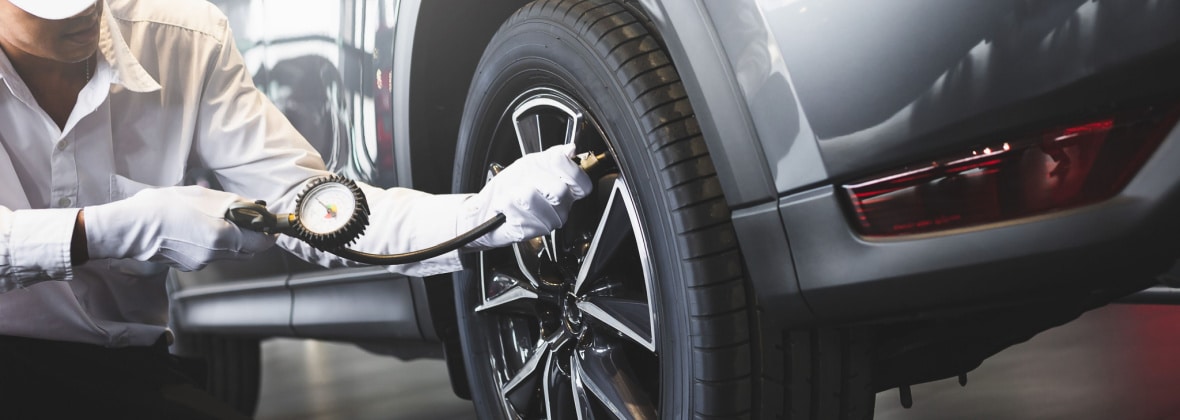Riding On Air: The Role Of Tire Pressure In Vehicle Preventative Maintenance
September 29, 2022
Tires

Whenever you get behind the wheel, you’re riding on air, relying on proper tire pressure to keep your vehicle safe, responsive, and fuel-efficient. So when you’re drawing up a plan for your vehicle’s preventative maintenance, make sure tire pressure checks and top-ups are on the list.
Today’s post reviews research on the importance of tire pressure checks and how they often go unappreciated in vehicle preventative maintenance plans, then explains how your local TIRECRAFT can help automate your essential upkeep.
Read on or contact your local TIRECRAFT to get a great price on a portable gauge, compressor, or vehicle preventative maintenance service straight away.
The Role Of Tire Pressure In Vehicle Preventative Maintenance
Inflating your tires to the proper air pressure may be the single most important thing you can do for vehicle preventive maintenance.
Oil changes get a lot of attention, and rightly so, but maintaining proper tire pressure is just as important, and much more cost-effective. After all, your tires support 95% of the weight of your vehicle and dictate almost every aspect of its handling, performance, and safety, and if you purchase a quality gauge and compressor from your local TIRECRAFT, pressure checks and top-ups will be free for life!
According to the Tire and Rubber Association of Canada (TRAC), proper tire inflation can:
- Extend the life of your tires and components—Over-inflation causes the side edges of your tires to lift, putting excessive pressure on the center of the tires, while under-inflation causes the side edges to sag, scraping the road and wearing away much faster than intended. Beyond drastically shortening the life of your treads, the uneven distribution of your vehicle’s weight forces suspension and braking systems to work harder, accelerating wear and upping service costs over time.
- Improve tire safety and reduce the risks of costly collisions—Under or over-inflated tires are much less responsive to driver inputs, and they’re also much more likely to fail out on the road, putting you and your fellow drivers at risk. Improper inflation also interferes with the function of antilock braking systems (ABS), traction control systems (TCS), and stability control systems.
- Increase fuel efficiency—Tires must be properly inflated in order to evenly distribute the weight of your vehicle and optimize the size of each contact patch. When your tires are underinflated, your engine has to work harder to overcome their drag and rolling resistance. Studies show that fuel efficiency drops by 0.2% for every 1 PSI lost, and according to research by TRAC, “regular tire maintenance and inflation could save the average Canadian driver the equivalent of weeks’ worth of gas every year.”
- Reduce emissions—Proper tire inflation can also help to reduce greenhouse gas emissions. Since every litre of fuel consumed by a vehicle releases 2.4kg of carbon dioxide into the atmosphere, every improvement to your vehicle’s fuel efficiency helps the environment.
With these findings in mind, proper tire inflation clearly deserves a place in any vehicle preventative maintenance plan.
And yet, according to a 2018 driver-study from the Tire and Rubber Association of Canada (TRAC), less than one-third (30%) of drivers measure their tires’ inflation pressure monthly, and those who do may not be doing so correctly.
Specifically, TRAC researchers found that:
- Nearly two-thirds (65%) of drivers were not aware that tire inflation should only be measured when tires are cold, which means that they have been stationary for at least three hours or have not been driven more than two kilometers prior to testing. Checking pressures when tires are warm gives inaccurate readings.
- More than one-third (37%) of drivers refer to the air pressure stamped on the tire’s sidewall, rather than consulting the owner’s manual. This is a huge mistake, as the imprinted sidewall pressure indicates the maximum pressure under load, not the recommended inflation level. Driving with tires inflated to the maximum level will increase rolling resistance, tread wear, and the risks of tire failure.
- Nearly 1-in-4 (22%) of drivers rely on visual inspections to determine whether their tires are inflated properly. This is a mistake, as under-inflation is not visible to the naked eye until 20% or more of your tire pressure has been lost.
But like the rest of your vehicle’s preventative maintenance, keeping your tire pressure in-check doesn’t have to be hard. Whether you’re looking for help with DIY pressure checks, you need a great price on a gauge or compressor, or you want to go pro with your vehicle preventative maintenance plan, your local TIRECRAFT is here to help.
Vehicle Preventative Maintenance Done Right: Work With TIRECRAFT
To schedule a consultation and create a personalized vehicle preventative maintenance plan, and get a free quote on any service, contact your local TIRECRAFT.
Back

